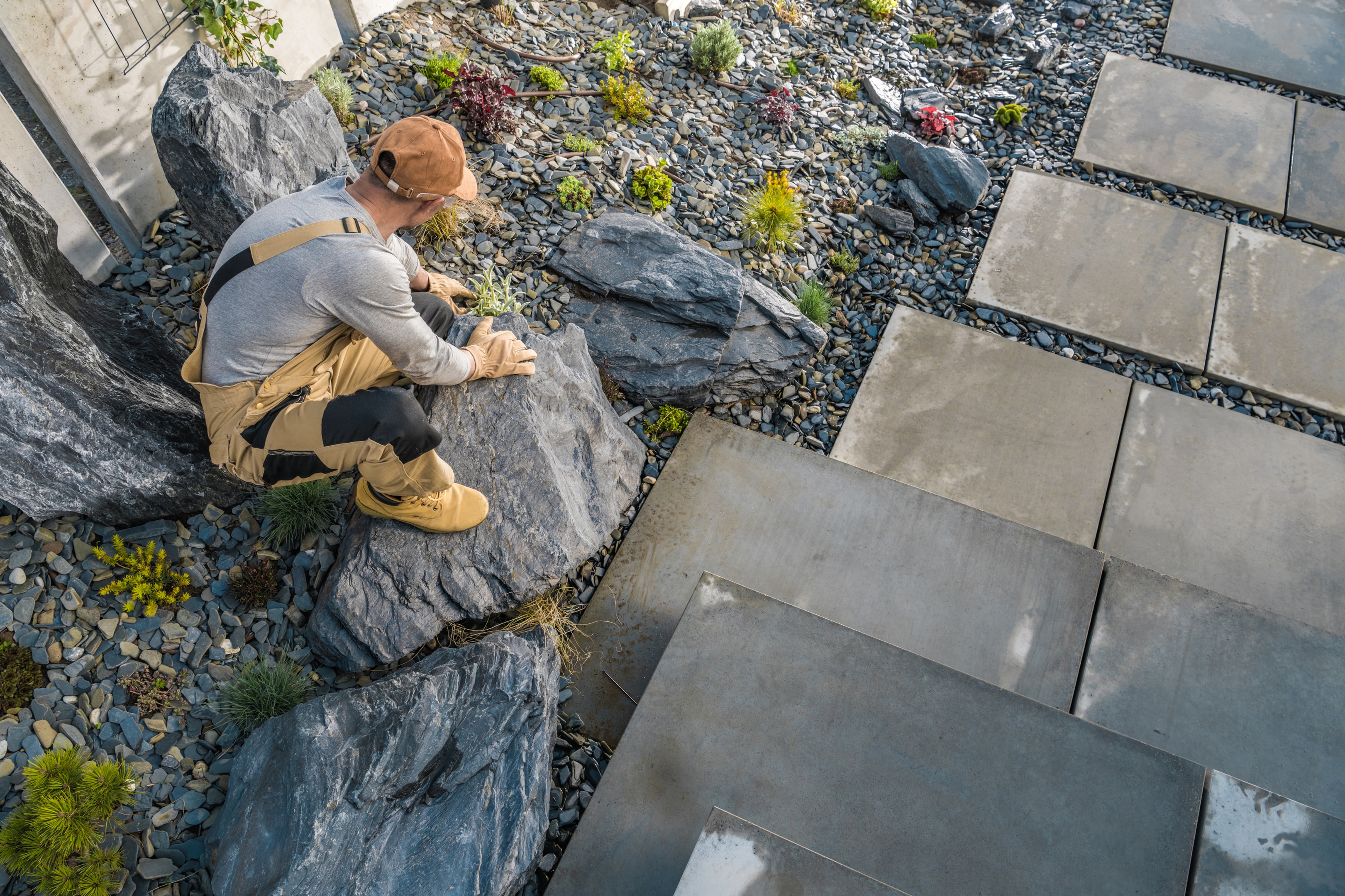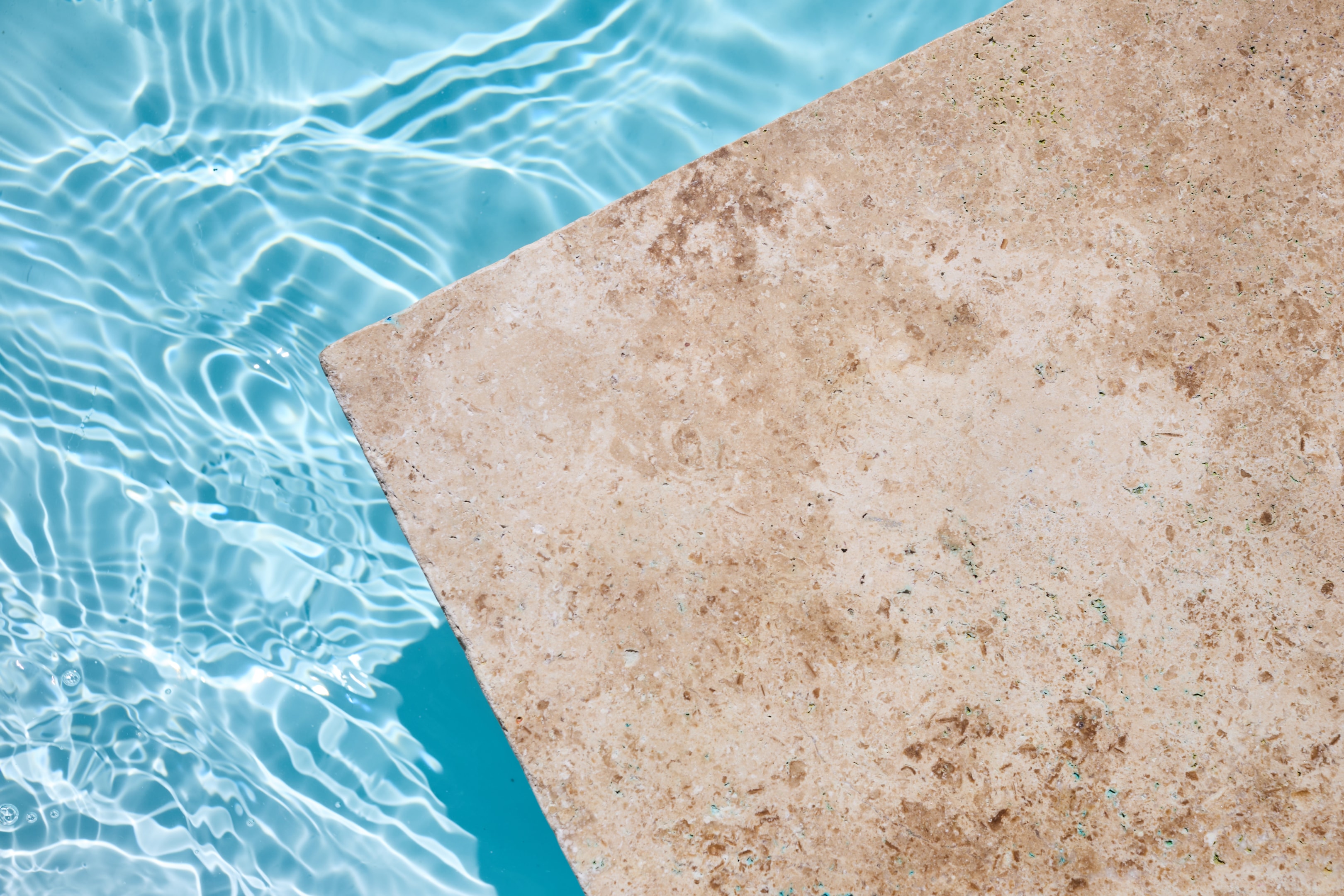Pros and Cons of Natural Stone vs. Concrete for Landscaping Projects
Creating a visually stunning and functional outdoor space begins with choosing the best hardscape materials. Two of the most popular choices for hardscaping are natural stone and concrete. Each material offers unique advantages and challenges that can greatly influence the look, durability, and cost of your project. This guide explores the pros and cons of using natural stone and concrete to help you make the best decision for your landscaping needs.
Understanding Natural Stone and Concrete for Landscaping
Natural stone and concrete are both widely used in landscaping for their versatility and aesthetic appeal. Understanding their characteristics is the first step in choosing the right material.
Natural Stone Landscaping
Natural stone, including flagstone, slate, granite, and limestone, is prized for its organic beauty and unique textures. Its timeless appeal makes it an excellent choice for creating elegant, natural-looking outdoor spaces.
Concrete Landscaping
Concrete, a man-made material, is highly versatile and can be poured or precast into various shapes and designs. Concrete pavers, for instance, provide a cost-effective solution for hardscaping but are more prone to issues like cracking and fading compared to natural stone, which offers longer lifespan and greater aesthetic value. It offers flexibility for creating modern and uniform outdoor spaces with a variety of finishes. However, large, solid concrete slabs are more susceptible to cracking under stress from seasonal changes, unlike smaller, interlocking pavers which can flex under similar conditions.
Aesthetic Appeal
The visual impact of your landscaping materials plays a crucial role in landscape design, creating the desired ambiance for your outdoor space. Hardscape materials, such as brick, stone, pavers, and gravel, are essential in establishing a balanced and structured outdoor space.
Natural Stone: Timeless Elegance
Natural stone offers a one-of-a-kind look with unique textures and colors. Its natural variations give outdoor spaces character and a sense of timelessness, making it perfect for traditional and rustic designs. However, its natural inconsistencies may not appeal to those seeking a uniform appearance.
Concrete: Modern Versatility
Concrete offers endless design possibilities with options for colors, patterns, and finishes, including stamped concrete that mimics the look of stone. Its clean lines and uniformity are ideal for contemporary landscaping projects, but it lacks the organic charm of natural stone.
Durability and Longevity
Both natural stone and concrete are durable materials, but their longevity and resilience can vary depending on environmental factors and maintenance.
Natural Stone: Built to Last
Natural stone is naturally weather-resistant and can endure heavy use, making it suitable for pathways, walkways, patios, and retaining walls. As construction materials, natural stone meets the durability standards set by the American Society for Testing and Materials (ASTM), ensuring it can withstand varying levels of pressure and environmental stresses. However, some stones may crack under extreme freezing conditions, which requires consideration for specific climates.
Concrete: Durable and Adaptable
Concrete is also highly durable and can withstand heavy loads, especially when reinforced. It’s an excellent choice for driveways and larger hardscaping projects. However, it can crack over time and requires regular maintenance to maximize its lifespan.
Cost Comparison
Budget plays a significant role in material selection, and both natural stone and concrete come with their own price considerations.
Natural Stone: A Premium Choice
Natural stone typically has higher upfront costs due to the expense of sourcing and the labor-intensive installation process. However, its beauty and durability often add long-term value to your property.
Concrete: Budget-Friendly
Concrete is generally more affordable, with lower material and installation costs. Decorative finishes, like stamping or staining, can add to the price but still remain a cost-effective option compared to natural stone.
Maintenance Requirements
Understanding the maintenance needs of your chosen material helps ensure it remains functional and visually appealing for years.
Natural Stone: Low Maintenance
Natural stone requires minimal maintenance, with simple cleaning and occasional resealing to preserve its appearance. Laying mulch is also an essential part of garden maintenance, enhancing the balance between hardscaping and softscaping elements. However, weeds may grow between stones, which might require extra care for pathways or patios.
Concrete: Requires Regular Attention
Concrete needs more upkeep, including sealing to prevent stains and cracks. Repairs for cracks can be more noticeable and require attention to maintain its aesthetic appeal.
Environmental Considerations
The environmental impact of landscaping materials is an important factor for eco-conscious homeowners.
Natural Stone: Eco-Friendly Choice
Natural stone is biodegradable and reusable, making it an environmentally friendly option. However, the energy-intensive quarrying process can impact sustainability.
Concrete: Energy-Intensive Manufacturing
Concrete has a higher carbon footprint due to the production of cement. However, incorporating recycled materials into the mix can make it a more sustainable choice.
Best Uses for Natural Stone and Concrete in Landscaping
Both materials have specific applications where they shine, depending on the design and functionality of your outdoor space.
Natural Stone Applications
Natural stone is ideal for creating pathways, garden walls, patios, and water features. It can complement the existing landscape and be mixed with different materials to create a distinctive look. Its natural textures and colors make it perfect for rustic and traditional designs.
Concrete Pavers Applications
Concrete excels in large-scale projects like driveways, retaining walls, and stamped patios. It is also an excellent choice for outdoor patio applications, where selecting the right type of concrete is crucial to ensure durability and functionality. Its versatility allows for seamless integration into modern and minimalist landscaping designs.
Customizing Landscape Design Projects with Stone or Concrete
Customization adds a personal touch to your landscaping project and ensures the final result matches your vision.
Natural Stone Customization
Natural stone can be arranged in creative layouts using irregular shapes and mixed textures. Natural stone pavers offer significant advantages in customization and design, allowing for unique and personalized outdoor spaces. Incorporating multiple types of stone adds depth and visual interest to your design.
Concrete Customization
Concrete offers flexibility with options for stamping, staining, and adding color pigments. These techniques allow for unique patterns and designs that mimic natural materials or create contemporary aesthetics.
Pros and Cons Recap: Making the Right Choice
When deciding between natural stone and concrete, it’s essential to weigh their pros and cons to determine the best fit for your project.
Natural Stone Pros:
- Unique, timeless beauty.
- Long-lasting and eco-friendly.
- Enhances property value.
Natural Stone Cons:
- Higher upfront cost.
- Labor-intensive installation.
Concrete Pros:
- Affordable and versatile.
- Quick installation.
- Customizable designs.
Concrete Cons:
- Prone to cracking.
- Requires regular maintenance.
Create Your Dream Outdoor Space with Natural Stone or Concrete
Choosing between natural stone and concrete for your landscaping project depends on your budget, aesthetic preferences, and functional needs. Both materials have their strengths and weaknesses, but with the right planning and expertise, you can achieve a stunning and durable outdoor space.
With over 60 years of combined experience, State of the Art Landscape has been transforming outdoor spaces in Northern Virginia and the Washington, D.C. area. From designing elegant stone pathways to crafting durable concrete driveways, our skilled team delivers quality and satisfaction on every project.
Whether you’re drawn to the timeless charm of natural stone or the modern versatility of concrete, we’re here to guide you through every step of the process. Contact us today to create a personalized outdoor environment that reflects your style and enhances your property.





